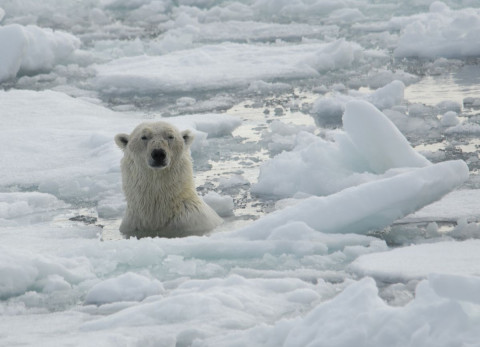Polarised debate: polar bear blogs reveal dangerous gap between climate-change facts and opinions

Polarised debate: polar bear blogs reveal dangerous gap between climate-change facts and opinions
Polar bears and retreating sea ice have become iconic symbols of the polarised climate-change debate. By focusing on these icons, deniers of human-caused global warming cast doubt among the public about the entire body of climate change knowledge. But a new study of the underlying science used in the debate could well melt down the trustworthiness of these deniers on social media.
No middle ground
“We found a major gap between the facts from scientific literature and the science-based blogs on the one hand, and the opinions aired in climate-change denying blogs on the other,” says the study’s initiator and first author, Jeff Harvey from the Netherlands Institute of Ecology (NIOO-KNAW). “It’s a very dangerous gap, as these blogs are read by millions.”
The researchers analysed 90 climate blogs in total, alongside 92 scientific papers on the subject. Although 45 ‘denier blogs’ claim to be based on science, they failed to overlap with the peer-reviewed evidence in the papers. Instead, they relied mostly on other denier blogs. And eighty percent relied on one blog in particular, whose author, says Harvey, “had neither conducted any original research nor published any articles in the peer-reviewed literature on polar bears.”
By contrast, 45 truly science-based blogs do match the evidence in the scientific papers. And there’s not much middle ground.
Time to speak out
The team that studied the blogs was international and multidisciplinary, including ecologists, polar bear researchers, climate scientists, science communicators and psychologists of various ages and from six countries. Among the authors are well-known scientists such as Steven Amstrup from Polar Bears International, Eric Post from the University of California, Davis, and Michael Mann from Pennsylvania State University.
Their advice, as voiced by Harvey: “Scientists, climb down from your desk and start to counter the misinformation on social media directly – and via the traditional media as well. Engage with the public via the blogosphere or citizen science for example. And very importantly, adjust your focus to what is clear instead of all the uncertain things still to be studied.”
If the misinformation is successfully countered, the debate may be ‘depolarised’ while polar bears and other arctic wildlife still have a future to look forward to.
____________________________________________________________________________
With more than 300 staff members and students, NIOO is one of the largest research institutes of the Royal Netherlands Academy of Arts and Sciences (KNAW). The institute specialises in water and land ecology. As of 2011, the institute is located in an innovative and sustainable research building in Wageningen, the Netherlands. NIOO has an impressive research history that stretches back 60 years and spans the entire country, and beyond.
More information:
- Principal investigator Prof. dr. Jeff Harvey, Netherlands Institute of Ecology (NIOO-KNAW), tel. 0317-473621, j.harvey@nioo.knaw.nl
- Science information officer Froukje Rienks, NIOO-KNAW, tel +31 6-10487481 / +31 317-473590, f.rienks@nioo.knaw.nl
Images available: photograph of an adult polar bear on the look-out. Source: Ian Sterling. And pie charts showing the opinions described in the blogs from this study.
In addition to the Netherlands Institute of Ecology, the following institutions are involved: VU University Amsterdam, UvA University of Amsterdam, Amsterdam University College in the Netherlands; Institute of Integrative Biology in Switzerland; University of California, Davis, Colorado State University, Polar Bears International, University of Wyoming, and Pennsylvania State University in the United States; University of Bristol in the United Kingdom; CSIRO Oceans and Atmosphere in Australia; Environment and Climate Change, and University of Alberta in Canada.
